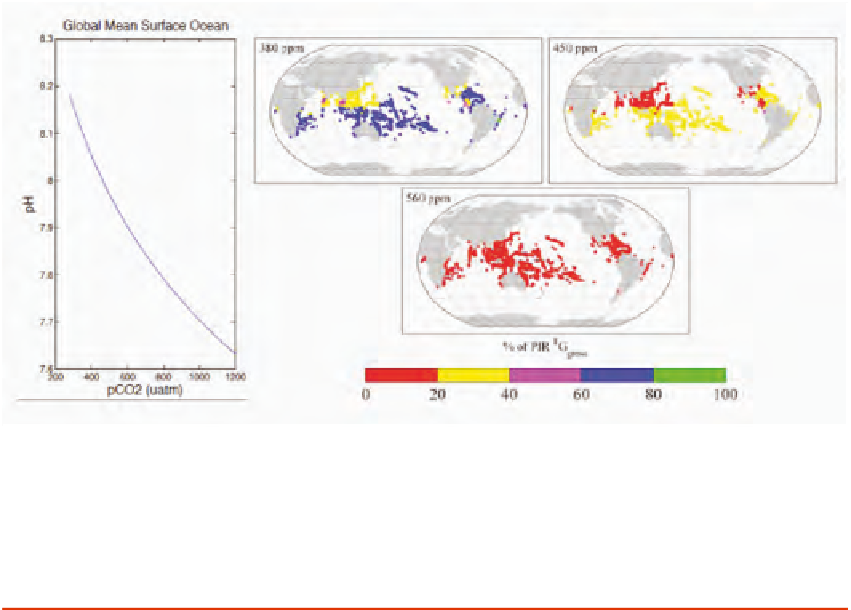Environmental Engineering Reference
In-Depth Information
FIGURE O.7 (left panel) Variation in pH of global mean surface waters with CO
2
. (right panel) Global coral
reef distribution and their net community calcification; the biological production of calcium carbonate
skeleton or shell material, relative to their pre-industrial rate (280 ppm), in percent, taking into account
both ocean acidification and thermal bleaching; the loss of algal symbionts in response to warming and
other stressors, for each reef location at CO
2
stabilization levels of 380, 450, and 560 ppm. Source: Silverman
et al. (2009). {4.9; 5.8}
Impacts of CO
2
, pH, and Climate Change on Ocean Biology
The patterns and rates of ocean primary production will change due
to higher sea surface temperatures and increased vertical stratification,
altering the base of the marine food-web.
Observations indicate a strong
negative relationship between marine primary productivity and warming
in the tropics and subtropics, most likely due to reduced nutrient supply,
and low-latitude primary production is projected to decline on basin-scales
under future climate warming. Primary production in some temperate and
polar regions is projected to increase due to warming, reduced vertical mix-
ing, and reduced sea ice cover. Subsurface oxygen levels are projected to
decline due to warmer waters and altered ocean circulation, leading to an
enlargement of oxygen minimum zones. {5.8}
The geographic range of many marine species is shifting poleward
and to deeper waters due to ocean warming.
Individual marine species
will change differentially, for example with the ranges of pelagic fish likely
changed more than those of demersal fish. Few studies have looked com-

